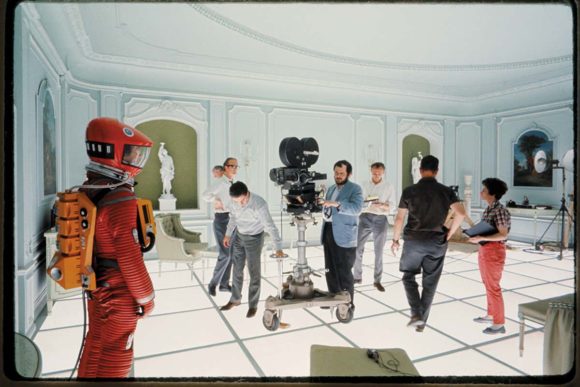
The celebrated film director Stanley Kubrick never took the future for granted. In films as diverse as Dr. Strangelove: or, how I learned to stop worrying and love the bomb (1964) and A Clockwork Orange (1971), Kubrick’s focus was always savagely humane, unpicking the way the places we inhabit make us think and feel. At the opening of a new exhibition at the London Design Museum in Holland Park, David Stock and I spoke to co-curator Adriënne Groen about Kubrick’s most scientifically inflected film, 2001: A Space Odyssey (1968), and how Kubrick masterminded a global effort to imagine one possible future: part technological utopia, part sterile limbo, and, more than 50 years since its release, as gripping as hell.
You can see the interview here.
How Stanley Kubrick‘s collaboration with science fiction writer Arthur C. Clarke led to 2001 is well known. “The ‘really good’ science-fiction movie is a great many years overdue,” Clarke enthused, as the men began their work on a project with the working title Journey Beyond the Stars.
For those who want a broader understanding of how Kubrick gathered, enthused and sometimes (let’s be brutally frank, here) exploited the visionary talent available to him, The Design Museum’s current exhibition is essential viewing. There are prototypes of the pornographic furniture from the opening dolly shot of A Clockwork Orange, inspired by the work of artist Allen Jones but fashioned by assistant production designer Liz Moore when Jones decided not to hitch his cart – and reputation – to Kubrick’s controversial vision.
But it’s the names that recur again and again, from film to film, over decades of creative endeavour, that draw one in. The costume designer Milena Canonero was a Kubrick regular and, far from being swamped, immeasurably enriched Kubrick’s vision. (There’s a wonderful production photograph here of actor Malcolm McDowell trying on some of her differently styled droog hats.)

Kubrick was fascinated by the way people respond to being regimented – by the architectural brutalism of the Thamesmead estate in A Clockwork Orange, or by a savage gunnery sergeant in Full Metal Jacket, or by their own fetishism in Eyes Wide Shut. Kubrick’s fascination with how people think and behave is well served by this show, which will give anyone of a psychological bent much food for thought.
